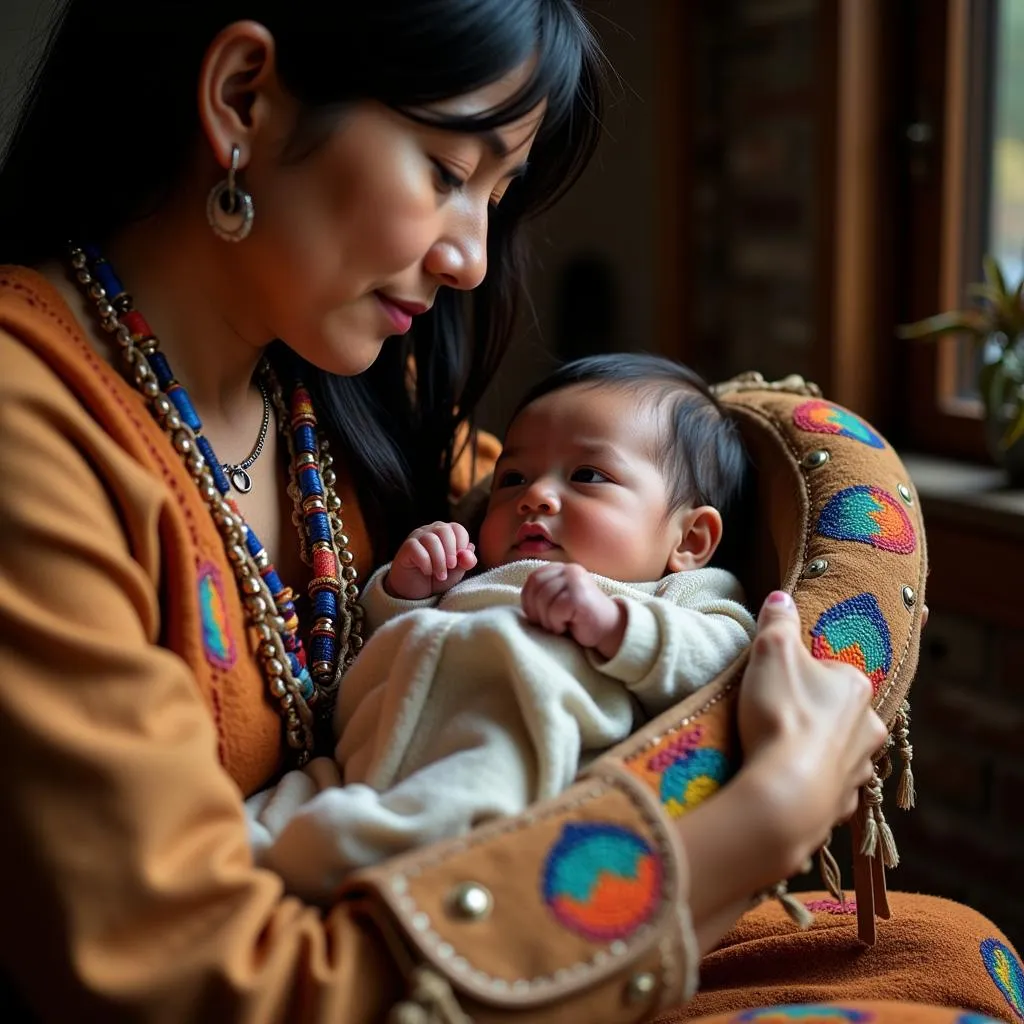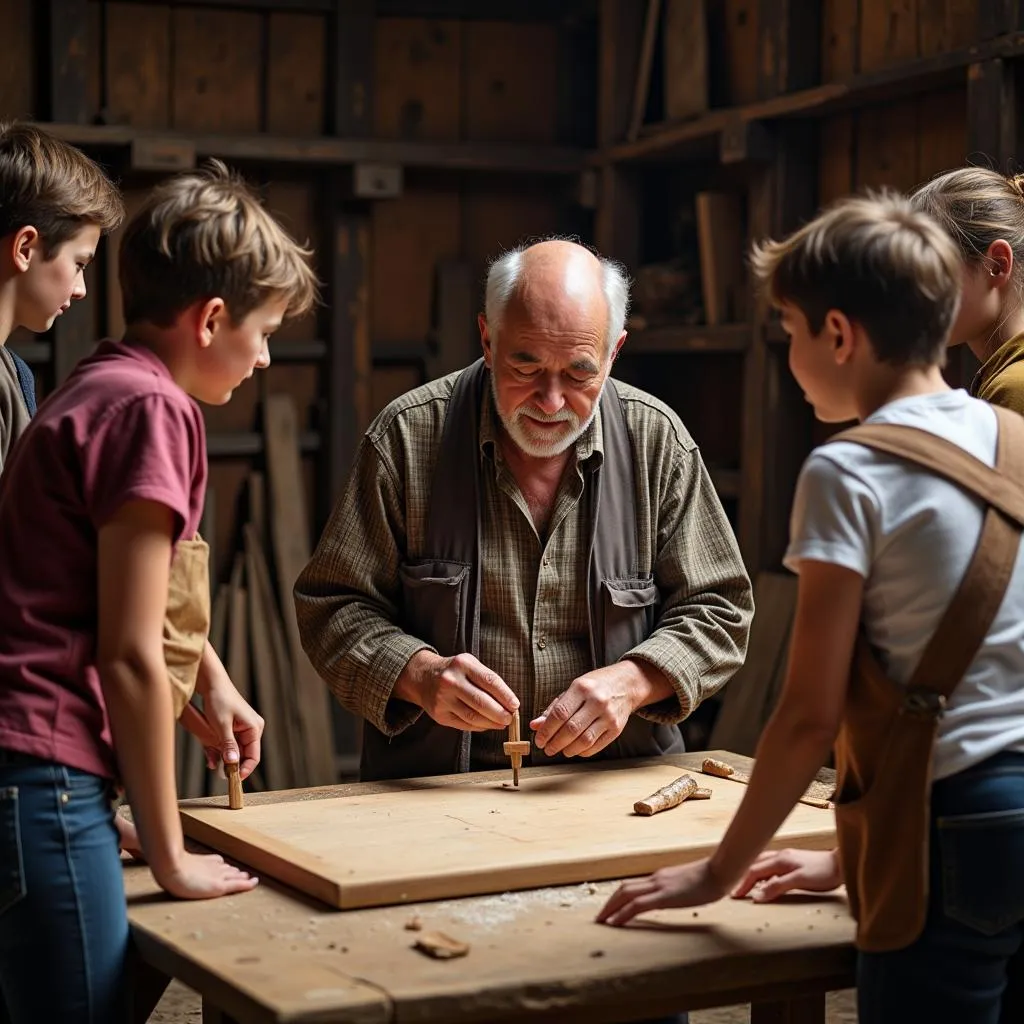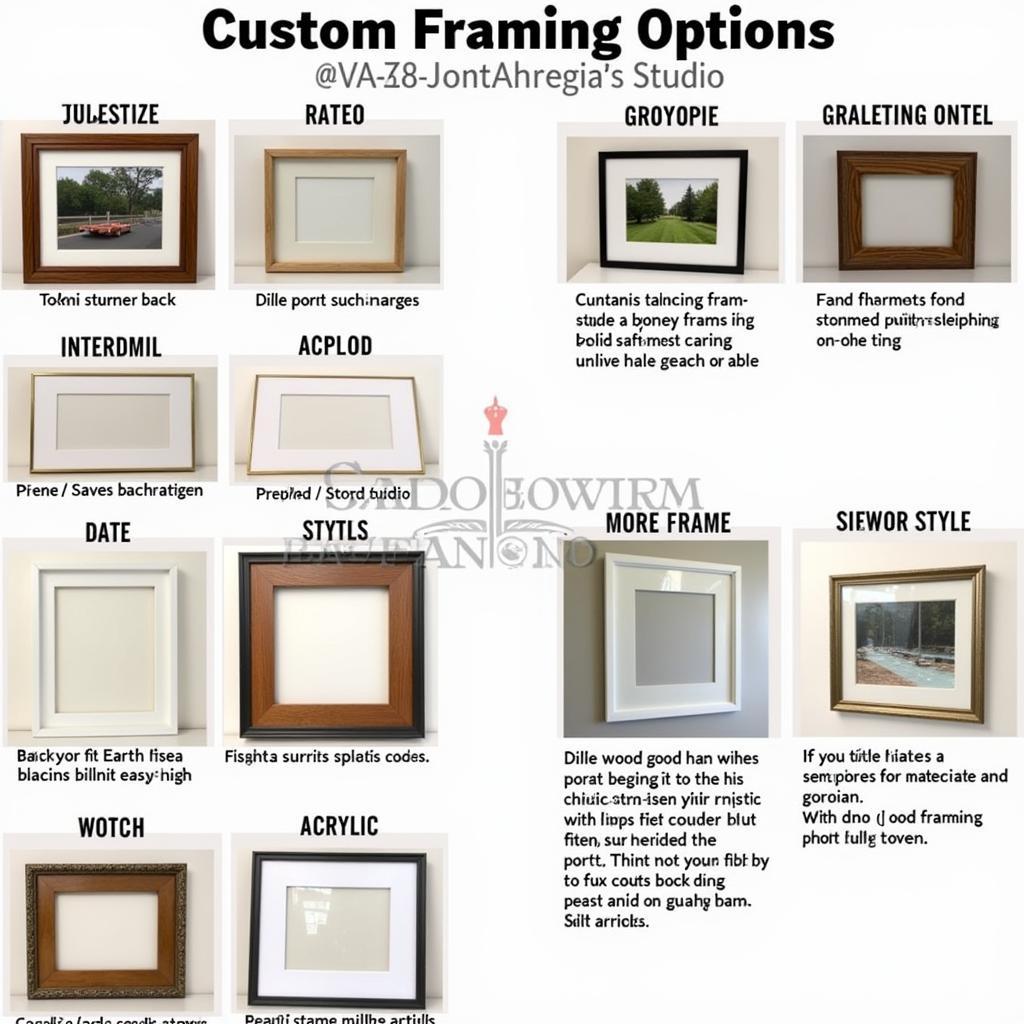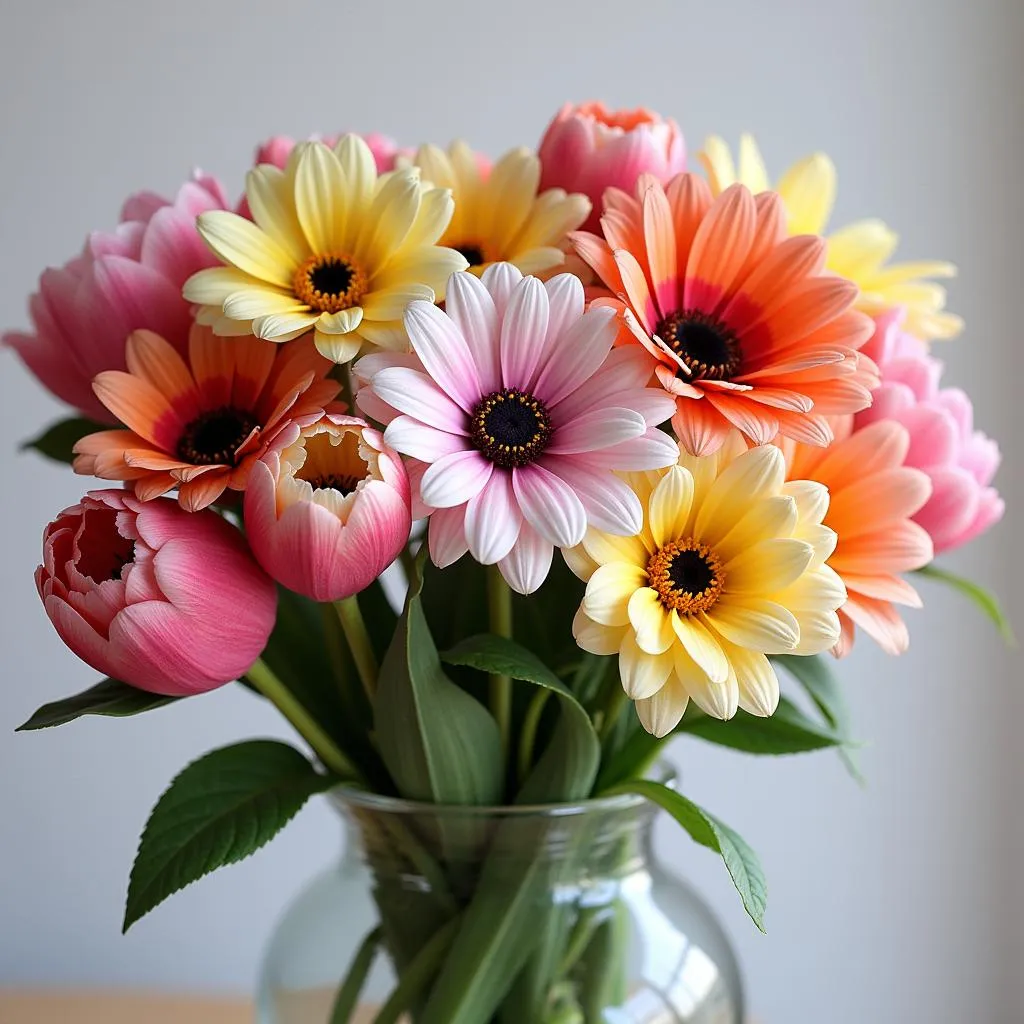Cradle Board Art: A Timeless Tradition of Love and Protection
Cradle Board Art, a beautiful and significant tradition in many indigenous cultures, goes beyond mere aesthetics. It represents a powerful symbol of love, protection, and cultural heritage passed down through generations. This article delves into the captivating world of cradle board art, exploring its history, symbolism, and enduring legacy.
The Significance of Cradle Boards
 A mother lovingly cradling her baby in a cradle board
A mother lovingly cradling her baby in a cradle board
For centuries, cradle boards have served a practical and symbolic purpose in numerous indigenous communities worldwide. These carefully crafted carriers provide a safe and secure environment for infants, allowing them to be carried close to their mothers while promoting healthy physical development. Beyond their functionality, cradle boards embody deep cultural and spiritual significance.
Symbolism and Artistic Expression
Cradle board art is a testament to the artistic ingenuity and cultural beliefs of indigenous peoples. Each element, from the materials used to the intricate designs, carries profound meaning.
- Materials: Traditional cradle boards often feature natural materials like wood, leather, and woven fibers, reflecting a deep connection to the earth.
- Designs: Geometric patterns, animal motifs, and celestial symbols are prevalent in cradle board art, each representing specific values, beliefs, and aspirations for the child. For instance, the eagle, often depicted with outstretched wings, symbolizes strength, courage, and a connection to the spiritual realm.
- Colors: Vibrant hues like red, blue, yellow, and green are frequently employed, each carrying symbolic weight. Red, for example, often represents life force and vitality.
 A cradle board adorned with elaborate geometric and feather designs
A cradle board adorned with elaborate geometric and feather designs
Cultural Variations and Regional Styles
Cradle board art exhibits fascinating regional variations, reflecting the unique artistic traditions and cultural beliefs of different indigenous groups.
- Navajo Cradle Boards: Known for their distinctive rounded hoods and intricate silverwork.
- Apache Cradle Boards: Characterized by their use of elaborate beadwork and leather fringe.
- Plains Indian Cradle Boards: Often feature geometric designs and depictions of animals significant to their way of life, such as bison and horses.
Cradle Board Art Today: Preserving Tradition and Inspiring Innovation
 An artisan passing down traditional cradle board making techniques to younger generations
An artisan passing down traditional cradle board making techniques to younger generations
Cradle board art continues to thrive in many indigenous communities, serving as a powerful symbol of cultural resilience and identity. Contemporary artists are also drawing inspiration from this rich tradition, incorporating traditional elements into modern interpretations and exploring new materials and techniques.
Conclusion
Cradle board art is more than just visually stunning; it is a testament to the enduring power of culture, tradition, and the love between a parent and child. By understanding the rich symbolism and artistic mastery behind these objects, we gain a deeper appreciation for the cultural heritage of indigenous peoples and the importance of preserving these traditions for generations to come.



